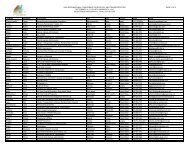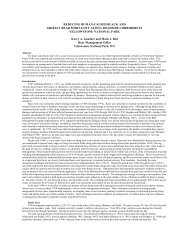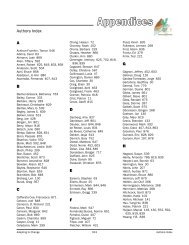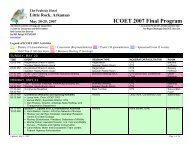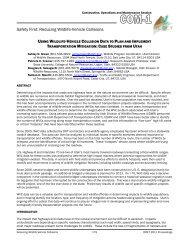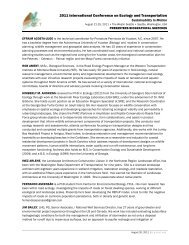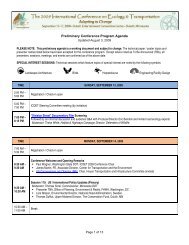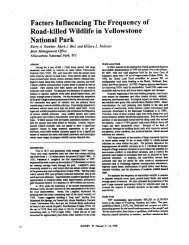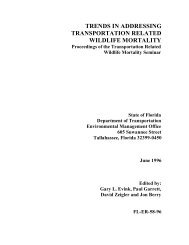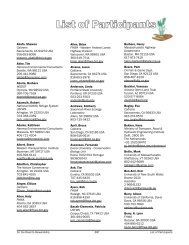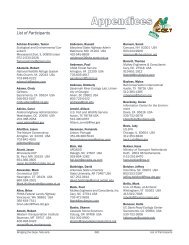Poster Sessions, pages 567-640 - ICOET
Poster Sessions, pages 567-640 - ICOET
Poster Sessions, pages 567-640 - ICOET
Create successful ePaper yourself
Turn your PDF publications into a flip-book with our unique Google optimized e-Paper software.
Simulation-Optimization Framework to Support Sustainable Watershed Development by Mimicking the<br />
Pre-Development Flow Regime<br />
Abstract<br />
Dr. Emily Zechman, Research Assistant Professor (919-513-7920, emzechma@ncsu.edu),<br />
Department of Civil, Construction, and Environmental Engineering, North Carolina State<br />
University, Campus Box 7908, Raleigh, NC 27695-7908, Fax: 919-515-7908 USA<br />
A new approach is presented to achieve a more aggressive sustainability objective for designing transportation<br />
infrastructure and land use planning: to design BMPs to continuously mimic the natural flow regime and ensure that<br />
ecosystems downstream of development would not be adversely affected.<br />
As the land uses are changed for development of urban areas and transportation infrastructure, ecosystems in<br />
receiving water bodies are significantly affected by the changes in duration, peak, and minimum flows. Though Best<br />
Management Practices (BMPs) are typically designed to not exceed some peak flow during a design storm and perhaps<br />
maintain a minimum flow at low-flow periods, downstream conditions are altered, potentially harming ecosystems.<br />
A new approach is presented to achieve a more aggressive sustainability objective: to design BMPs to continuously<br />
mimic the natural flow regime and ensure that ecosystems downstream of development would not be adversely<br />
affected. This objective may not be achievable through the implementation of a single detention pond at a watershed<br />
outlet; a system of BMPs strategically placed throughout the watershed may be required. Several BMPs exist as options<br />
for treatment, such as detention/retention ponds, constructed wetland systems, infiltration systems (i.e., porous<br />
pavement), and vegetative filtrations systems. As each system chosen for implementation must be specified by a set of<br />
design decisions and placement location, an efficient mechanism of optimization is needed to handle the large array<br />
of decisions. In addition, a comprehensive modeling framework is needed to simulate a collection of BMPs simultaneously.<br />
A quantitative analysis framework is described and illustrated for coupling BMP and watershed models with<br />
optimization techniques.<br />
Bridging the Gaps, Naturally 639 <strong>Poster</strong>s



